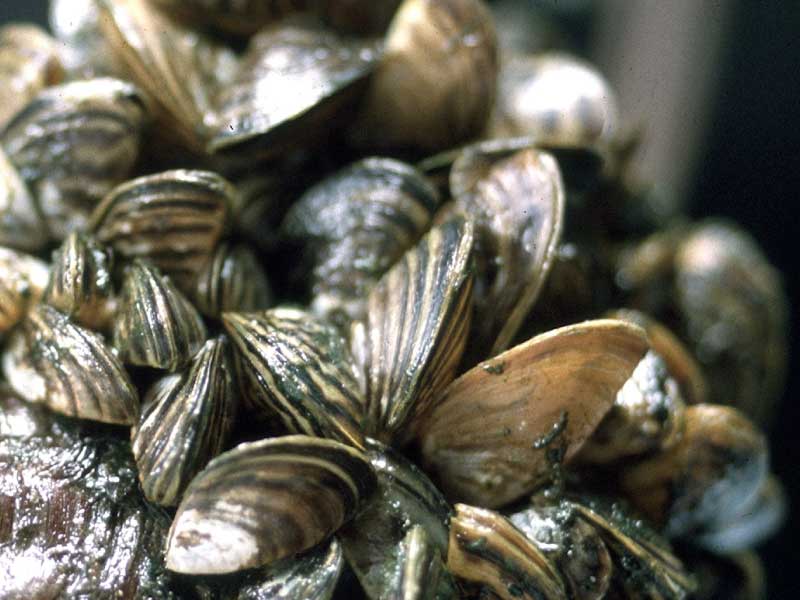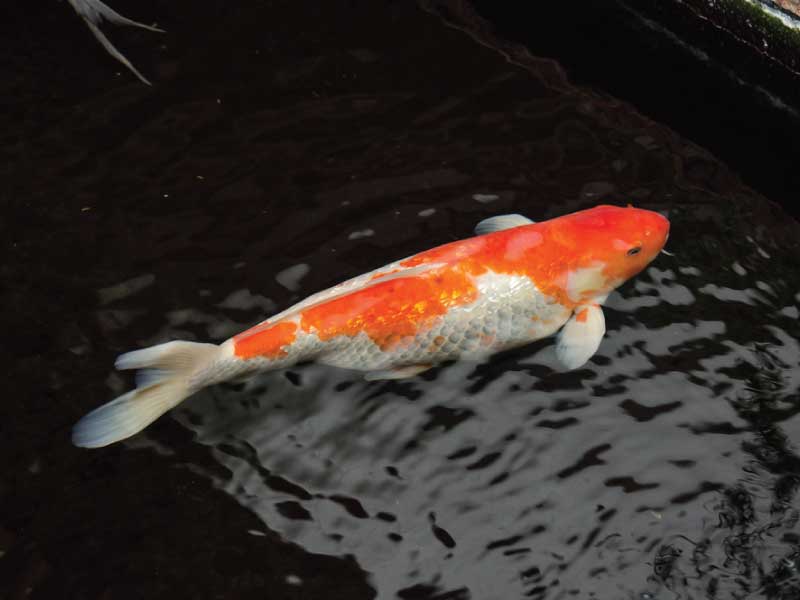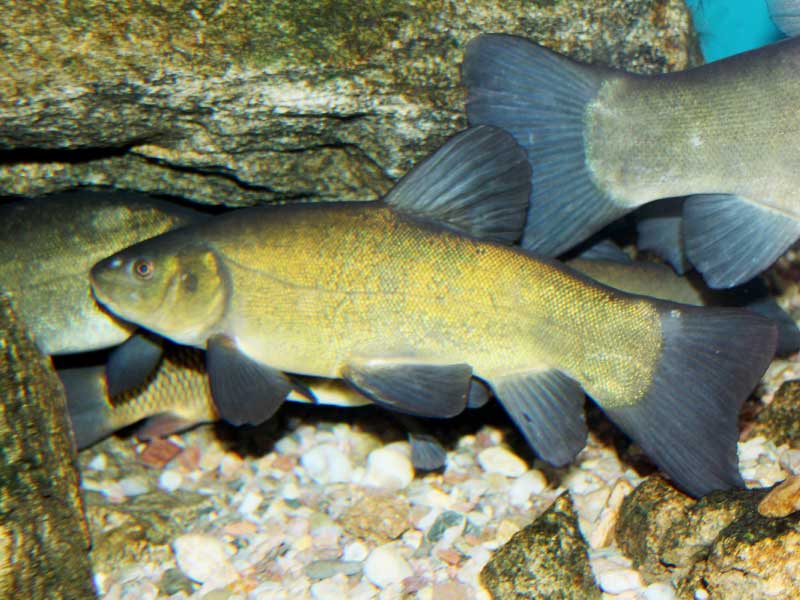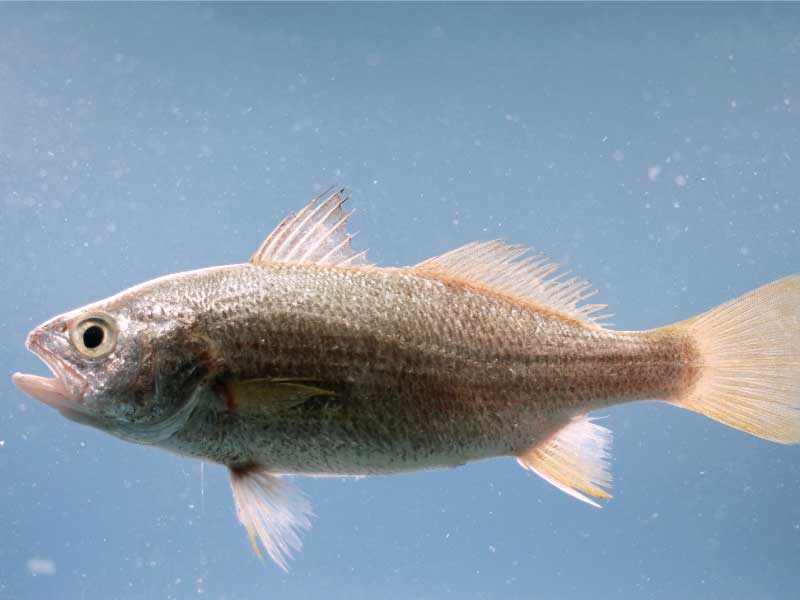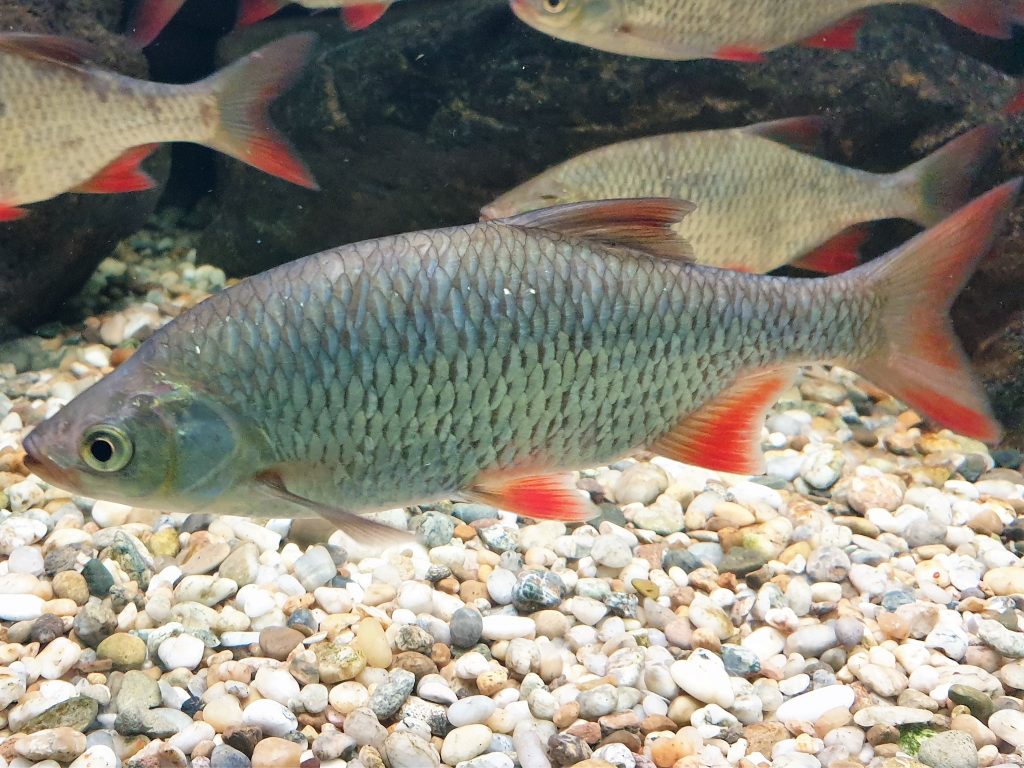Aquatic invasive species are non-native organisms that harm the environment, economy, or human health.
They outcompete native species, take over recreational areas, and can cost millions of dollars to control. Lake Champlain has fifty known invasive species. Some arrived here by natural forces, but most were introduced by people.
The following species are considered high management priorities:
- Alewife
- Asian Clam
- Eurasian Watermilfoil
- Japanese Knotweed
- Purple Loosestrife
- Water Chestnut
- Zebra Mussel
Resources
Lake Champlain Basin Program AIS Resource Page
Lake Champlain Basin Invasive Species Guide
Aquatic Invaders Brochure
State of the Lake Report AIS Section
Live Stream of ECHO’s Aquatic Invasive Species Tank
All the animals in this tank are aquatic invasive or non-native species. Can you identify them using the species information below?
Zebra mussel
Dreissena polymorpha
Causing scratched feet and clogged pipes, Zebra mussels are among the Lake’s most pesky invasives. They reproduce quickly and can overwhelm objects they attach themselves to, including intake pipes, shipwrecks, and even other mussels.
Date of introduction: 1993 in Lake Champlain
Area of origin: Eurasia
Koi or Common carp
Cyprinus carpio
A common aquarium pet, Koi is a domesticated variety of the Common carp. It can grow dramatically and harm native habitat if released into the wild.
Date of introduction: 1800s in the U.S.
Area of origin: Eurasia
Tench
Tinca tinca
This bottom-feeding fish competes for food with trout and other game fish. An unlawful release from an aquaculture facility led to its establishment in Lake Champlain.
Date of introduction: 2002 in Lake Champlain
Area of origin: Eurasia
White Perch
Morone americana
This invasive species now outnumbers native perch in some Lake Champlain bays. It competes for food with local shiners and eats walleye eggs, putting populations at risk.
Date of introduction: 1990 in Lake Champlain
Area of origin: Atlantic coast
Goldfish
Carassius auratus
This common pet was the first foreign fish introduced into North America. It is not considered an invasive, but unwanted pets should never be released into the wild.
Date of introduction: 1600s in the U.S.
Area of origin: Asia
European rudd
Scardinius erythrophthalmus
This invasive fish grazes on shoreline plants, potentially degrading native spawning grounds. It was once widely sold as bait in Vermont, but its sale is now illegal.
Date of introduction: 1991 in Lake Champlain
Area of origin: Europe
What You Can Do
Do not release
When baitfish or unwanted pets are released into the Lake, they can cause unexpected harm. Likely introduced into Vermont waterways by anglers, alewife have hurt fisheries by competing with native fish for food and feeding on their eggs.
BUY non-invasive plants and fish for your home aquariums.
DISPOSE leftover bait into the garbage.
DON’T DUMP unwanted plants or animals into the wild.
Clean, drain, and dry
Most invasive species’ introductions take place by accident when they “hitchhike” on boats. Small invasives, such as the spiny waterflea, can be difficult to detect by eye and survive in very small amounts of water.
Help Prevent the Spread of Aquatic Invasive Species:
CLEAN off aquatic plants, animals, and mud from your watercraft and other equipment.
DRAIN water from your watercraft including the motor, bilge, live well, and ballast.
DRY your watercraft for five days or more when moving between waters in order to kill small species not easily seen.

